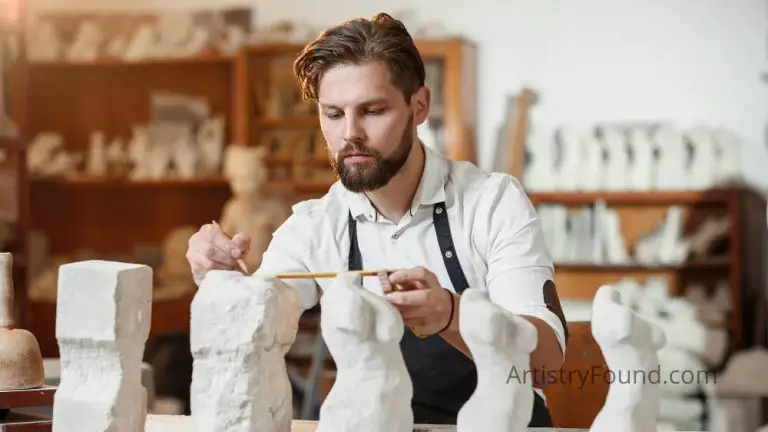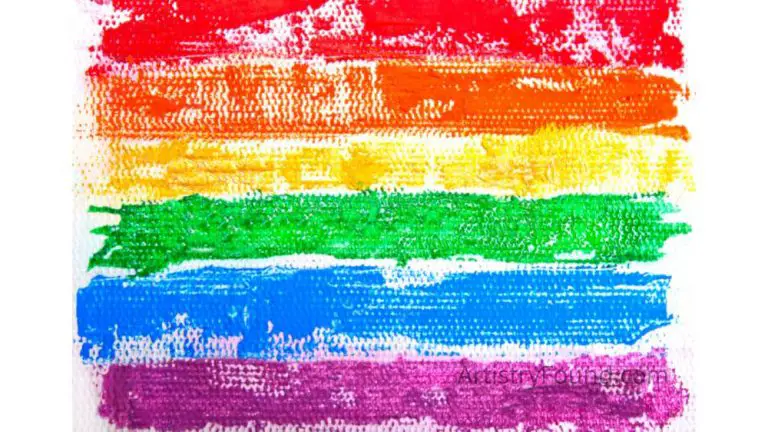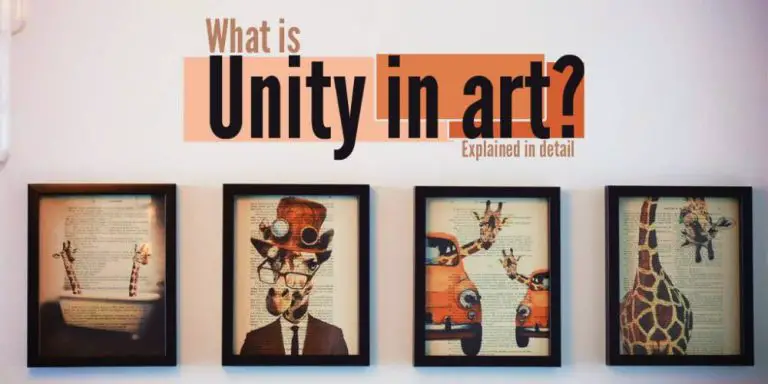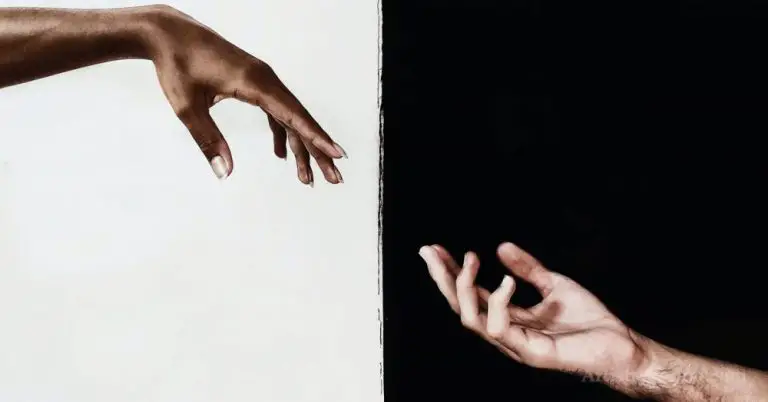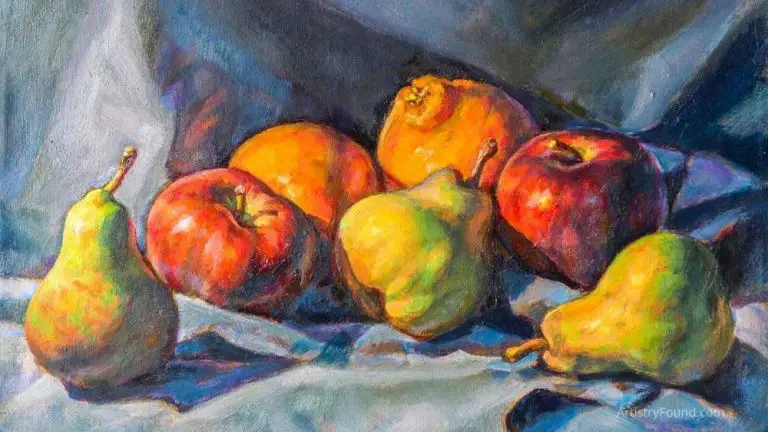What is Variety in Art? (How It Makes Art More Distinct)
Art is the end result of a creative mind at work, and as such can take on many different forms.
There is no single way to create art, and what might be considered a masterpiece to one person may be seen as bad work by another. This variety is what makes art so interesting and unique – each person’s interpretation of it is completely different
In art, variety refers to the utilization of various qualities or examples of visual elements. It is the polar opposite of monotonous or repeated employment of the elements.
What is Variety in Art?

(This article may contain affiliate links and I may earn a commission if you make a purchase)
Flickr Image by Pedro Riberio Simões
Variety in art refers to the employment of a variety of lines, brush strokes, colors, shapes, and other elements to achieve the most extraordinary effects. Variety is actually distinctive and often preferred because of the way it operates through juxtaposition, collaboration, and contrast.
To put it another way, the variation aspect adds “spice” to the artist’s perspective and makes it more intriguing. As an artist, you can play around with different elements adjacent to each other to find new ways to express yourself via art.
Why Do Artists Use Variety in Their Work?
Artists utilize variety in their work to break up the monotony and make the painting or other artwork more appealing for the viewer by including a variety of visual components. Artists utilize a variety of techniques to capture the viewers’ attention.
In a work of art, different elements such as lines, forms, and colors are used and put adjacent to each other. They are in stark contrast to one another, giving the image a dynamic feel.
Various artistic elements close to each other are used by artists to create variation in their canvas.
The juxtaposition of a warm and dull color creates emphasis. Geometric shapes that are close to organic shapes add variation to the design. There are numerous methods to add diversity to your life.
Principles of Art in Variety

Below are the 6 principles of variety in art:
Contrast
In art, contrast is everything. A work of art would be nothing more than a blank canvas if it didn’t have it. The degree of difference in design and adjacent features is referred to as contrast.
To have pieces, on the other hand, is to have elements that stand out and give some elements more meaning than others.
Balance
Whether in typography, pictures, shapes, designs, or something else entirely, the essential premise of any artwork is balance. To achieve balance, you must concentrate on a few key elements while blending the rest.
The visual distribution or weight of the elements in a piece of art is called balance. If one side of a painting has the same apparent weight as the other, the artwork will be balanced. There are two sorts of balance: symmetrical and asymmetrical.
Emphasis
Using various elements to emphasize a certain location in an artwork is known as emphasis. The term “emphasis” is simply another way of describing a focal point in your work.
It involves the main feature of the artwork and is meant to stand out in order for there to be variation in art. To deemphasize information, the inverse of this method might be done.
Proportion
This is a term that refers to the proportion of one element in relation to another in order to generate diversity in art and can also be used to convey importance.
Hierarchy
Hierarchy necessitates the processing of content as well as the audience’s understanding of the concept of variation in art.
Repetition
Variety in art necessitates reinforcing an idea, which can be done through the principle of repetition. With repetition, you can unite the art to bring the core idea to life.
How to Add Variety in Art
To give variation to the composition, different techniques are employed. You can include more details to make the artwork more thought-provoking and more challenging for the viewer. They all add visual interest to an artist’s work.
Similar elements, or features of those elements, can be reproduced in harmony and unity several times. Make a point of highlighting what makes them special. In order to create dynamic artworks, different art elements such as shapes, colors, textures, and other aspects must be used.
Adding too much variation can sometimes cause the harmony to break down. Emphasis can also be created by specifically placing a specific element near another element.
Some principles below can crossover, which is good.
Using Shapes To Create Variety
If you employ the same shapes, like circles or squares, throughout your painting, it will appear monotonous and unnatural. Therefore, it is important to use different shapes.
All realistic painters are taught that the first step in the painting process is to find and draw out the largest shapes. After that, repeat with the second stack of shapes. Finally, you add surface elements like highlights, texture changes, and finishing touches.
It doesn’t matter how big or little your shapes are – organic or geometric, solid or flimsy, light or dark, colorful or monotonous.
Begin by increasing the variety and dynamic of your positive and negative shapes. To put it another way, try to stay away from flawless geometric shapes, straight lines, and equal edges. Make sure your shapes aren’t all the same size.
Note that organic shapes create variety when added with geometric shapes. Similarly, geometric shapes close to organic shapes create interest.
Using Colors to Add Variety
There are 3 primary methods to change up your color palette:
- Value – It refers to how light or dark it is.
- Saturation (the extent to which a color is rich, vibrant, or powerful); or
- Hues (where color is located on the color wheel)
It can be bright or subdued, warm or cool, straight from the tube, or complexly combined. Consciously using color is one of the most exciting and satisfying ways to create variety in art, and there are literally millions of different color combinations to select from. In any given artwork, you can paint in monochrome or with a variety of colors.
Add a few fresh tubes of color to liven up your process if the colors you’re using aren’t exciting you any longer. Artists induce variety by either limiting or broadening their palette and mixing the colors in a unique way.
Using Different Sizes Created Variety in Art
In art, size is used to create variation.
Size is important in producing distance, perspective, depth, context, and other effects. The drawing will get monotonous if size distinctions are not shown.
Check the sizes of your shapes for variation in this area as well. If your scene or subject contains monotonous, repetitive shapes, whatever you do, don’t duplicate it exactly. Make the shapes and design more intriguing by using your imagination.
Overall, the work takes on a more realistic appearance due to its scale.
Adding varied sizes to the object in addition to its standard size adds interest and variety to the work.
An artist may not employ just one element in a complete composition; they may use numerous elements to generate variety in their work.
Using Lines to Creative Visual Variation
The most essential of all graphic elements is the line. It simply refers to a line that connects two places. Lines can be thin or wide, long or short, broken or continuous, linear or curved.
Different art elements close to each other are used by artists to create variation in their canvas. If the image mostly consists of small straight lines, juxtaposing them with lengthy curving lines gives variation.
It will assist if you recall that the artist’s goal is to provide options or variety for the viewer, not to draw attention to the curving line. If they wish to draw attention expressly, it becomes Emphasis, which is another aesthetic principle.
Examples of Variety in Art
Below, you’ll find a couple of examples illustrating variety in art and how a couple of famous painters used variety to bring their artwork to life.

https://commons.wikimedia.org/wiki/File:Claude_Monet._Haystack.
Each of these paintings shows a great deal of diversity and illustrates how variety in art can elevate an artwork when used properly.
Frequently Asked Questions
What Does It Mean to have Unity and Variety in Art?
The idea that aesthetic worth or beauty in art is dependent on the fusion of many aspects into an organic whole that provides a single image is known as unity in variety.
What are the Various Kinds of Contrast in Art?
The contrast in texture, shape, lines, size, temperature, space, edge, etc., are the various types of contrast in art.
In Terms of Art, What is Contrast?
When it comes to art, contrast is achieved when opposing components are combined. Despite the fact that these aspects are diametrically opposed, their combination can be enticing. In fact, the contrast in art could be regarded as the golden law of art.
How Does Variety Differ from Unity?
Variety differs from unity because it introduces dissimilar elements.
Why Do Artists Utilize Various Methods in their Work?
It aids in the creation of a unified body of work for artists. Some painters use different methods at the same time, which is frowned upon by exhibitions and collectors of art, but it could also reveal a lack of imaginative effort.
I believe that an artist should be free to paint whatever and how they desire at any particular time.
What Does It Mean to Have Variety in Art?
The use of visual features by artists and designers to add complexity to their work is referred to as variety. Elaboration, contrast, variation, and change – all give visual interest to an artist’s work.
What is Variety in Art – Final Thoughts
Adding variety to your artwork if you feel it is tedious or dry is quite easy. In terms of diversity, there are no strict guidelines; it all relies on your level of ingenuity.
Without compromising the harmony, an artist can employ a variety of shapes and sizes while not stressing too much to balance the artwork.
Remember that when it comes to creating variations in the artwork, the sky is the limit!

